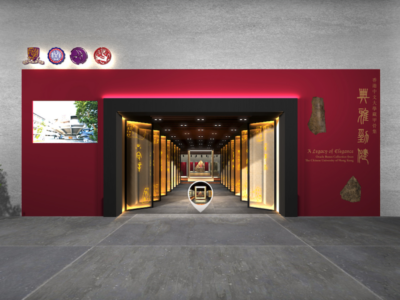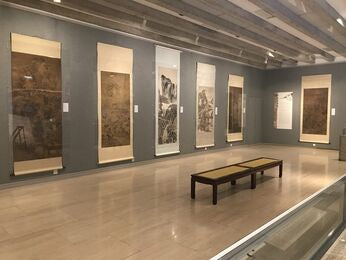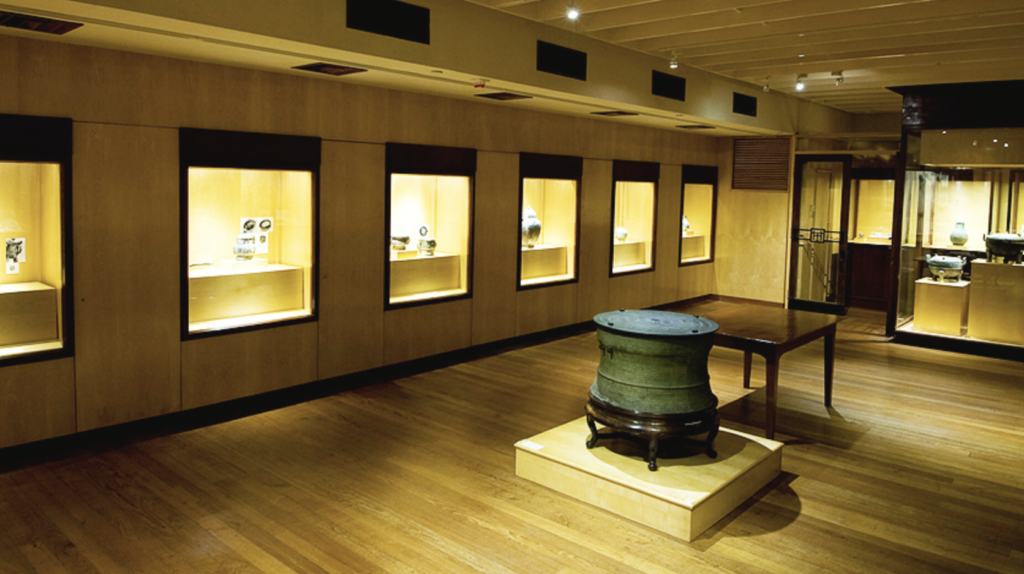University Museum and Art Gallery, Hong Kong
University Museum and Art Gallery, Hong Kong
Couldn't load pickup availability
Current Exhibitions
New examples of graphic arts: 20th century Japanese masters Akira Kurosaki and Tadayoshi Nakabayashi
October 16, 2024 - February 16, 2025
1/F, Tsui Chin Tong Building, HKU Museum of Art, 90 Bonham Road, Pok Fu Lam, Hong Kong
This exhibition brings together many masterpieces by Akira Kurosaki and Tadayo Nakabayashi to highlight the uniqueness, cultural relevance and innovation of the two masters' creations, and to review the contribution of their artistic achievements to the development of Japanese prints. Both printmakers were born in 1937 and studied art courses in very similar ways. Their prints cover a variety of subjects and add distinct color effects to their images. Although the two masters have different creative styles, they are both good at abstract art creation and known for their superb narrative techniques.
The continuous advancement of printmaking technology and the rise of abstract art have become the core forces driving the revival of printmaking. In an atmosphere of keen innovation, the themes of the new generation of prints are closely related to issues related to the rapid transformation of post-war Japan. The development of contemporary printmaking reflects the creative trend of artists focusing on self-expression, ushering in an unprecedented era of experimentation and innovation.
Sketching His Land and People:
The Drawings of Eddie Chau
26 Jun 2024 - 13 Oct 2024
1/F & 2/F, Fung Ping Shan Building, UMAG, HKU, 90 Bonham Road, Pokfulam, Hong Kong
Eddie Chau (1945–2020) was a Chinese painter born in Indonesia who made Hong Kong his home in 1992. Having taken art lessons in high school in Bandung, Indonesia, and receiving artistic mentoring from the painter Jiang Yudi, his training as a painter was primarily self-taught, relying on disciplined practice and the ability to see—and make others see—the beauty in life.
A talented water-colourist, Chau’s skill in depicting the lush natural environment was first recorded in the landscape paintings he executed as a young adult in the mid-1960s in Indonesia. Documenting the rural environment in and around Bandung, his work is exemplary in terms of his attention to detail and the colour palette employed to render the village scenes in a warm light. His naturalistic style gives Chau’s paintings a sincerity that is at once honest and beautiful.
While these influential early years were followed by material scarcity and simpler monochrome drawings executed in Guangdong province, it was during these formative years that he further developed his genius for observing and recording both larger pictorial contexts and minuscule details. From Chau’s more modest sketches from the 1970s to the complex drawings preserved in his sketchbooks of the 2000s, his oeuvre records the master’s development of hand skills and meticulous drawing techniques for which his later panoramic paintings are known.
Today, it is thanks to the artist’s careful preservation of his work that later generations can fully appreciate the variety of artworks produced, the artistic development mastered and the principal pieces Eddie Chau will be fondly remembered for. This comprehensive exhibition bears witness to the artist’s nearly sixty-year-long career and it celebrates the generous donation by the artist’s family of more than 200 artworks.
About the Museum
The University Museum and Art Gallery (UMAG) of The University of Hong Kong was founded in 1953 as the Fung Ping Shan Museum. Originally established as the Fung Ping Shan Library of Chinese language publications in 1932 in honour of its benefactor, the building became a museum dedicated to collecting Chinese art when the University’s libraries consolidated. The museum was renamed UMAG in 1994, shortly before its new wing was opened to the public in 1996. It is the oldest continuously operated museum in Hong Kong and over the past seventy years it has built up a diverse collection of ceramics and bronzes dating from the Neolithic period (c. 7000–c. 2100 BCE) to the Qing dynasty (1644–1911), as well as traditional and modern paintings from the Ming (1368–1644) to the twenty-first century.
Chief among the collections are the Museum’s ceramics, which show the extraordinary achievements of the Chinese potter from Neolithic period painted pottery jars, to the decorative porcelains of the Qing dynasty. Among the early wares are examples of funerary pottery dating from the Han (206 BCE–220 CE) to the Tang dynasties (618–907), which include lead-glazed models and vessels, as well as tri-coloured (sancai) ceramics. Throughout Chinese history, ceramics have been traded and admired outside of China. Of these, green ware, particularly Yue and celadon, which were sought after in Southeast Asia and Korea, and the development of blue-and-white porcelains, which were made for the Islamic market and popular in Europe, have been the most influential pieces and are well-represented in the Museum’s collection. Of particular note is one of the earliest known examples of underglaze-blue decoration in the form of a small tripod water pot dating to the Tang dynasty. The Museum also has representative examples of work made by the famous Song (960–1279) kilns, such as those of Ding and Cizhou, and mono- and polychrome decorated ware from the Ming and Qing dynasties.
Other highlights of the collection are the Museum’s Chinese bronzes that include ritual vessels dating to the Shang (c. 1600–c. 1100 BCE) and Western Zhou (c.1100–771 BCE) periods, and a comprehensive collection of mirrors dating from the Eastern Zhou (770–256 BCE) period to the Tang dynasty. The Museum also contains the largest known collection of Mongol period (Yuan dynasty 1271–1368) Nestorian crosses in the world. In addition to its collection of carvings in jade, wood and stone, the Museum has a small but significant collection of Chinese ink painting dating from the Ming dynasty to the present and twentieth-century Chinese oil painting.
In addition to these permanent collections, UMAG regularly hosts exhibitions of contemporary and ancient Chinese and Western art, as well as on early Hong Kong history. The Museum was originally established as a teaching museum and has maintained this commitment to the University through the teaching of Chinese art and museum studies and by encouraging students to broaden their education through the arts. It regularly presents non-exhibition related talks and activities that are open to both the University’s students and public.
Share











